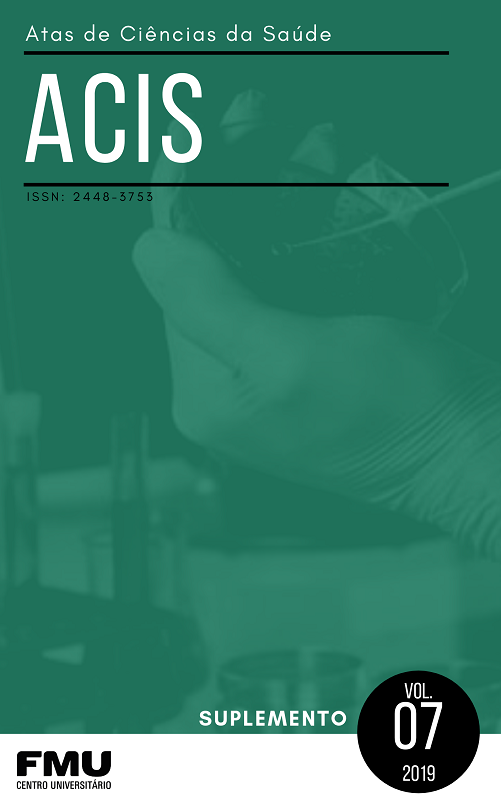DEVELOPMENT OF A TEACHING MODEL FOR TRAINING STUDENTS IN THE RECTAL HORSE PALPATION
Keywords:
horse, methodology, simulation, welfare.Abstract
The use of animals for scientific purposes constitutes historical practices in human civilization, but it raises controversies in societies concerned with the protection of animals. However, it is necessary to develop methods of teaching that replace them, in order to offer a near reality experience, enabling future professionals to perform the procedures correctly.The aim of the study was to develop an abdominal of horse dummy that could replace the use of animals in the rectal palpation technique, aiming at the quality of teaching in veterinary medicine and at the same time animal welfare, which could be spared of an invasive and stressful procedure. In order to perform the mannequin, low cost materials were used, easy to handle and could simulate training close to reality. The intestinal segments made of tissue were arranged in a drum, which mimicked the abdominal circumference of the horse, making it possible to learn through blind palpation and direct observation of the positioning of the organs through a lateral opening in the drum. The developed model met the expectations, especially regarding the positioning and consistency perceived during the blind palpation, bringing to the student a detailed perception and allowing the repetitive training of the technique.Â
References
ALVES, G.E.S. Exame transretal: importância, realidade do ensino, riscos, necessidade, viabilidade e estágios de competência. Anais do II Simposio Alogoano de Medicina Equina. Maceió, Alagoas, p. 95, 12 e 13 de abril de 2012.
ALVES, G.E.S.; BOTTEON, P.T.; OLIVEIRA, H.P.; CASSOU, F. Exame transretal do equino com cólica. Cadernos técnicos de Veterinária e Zootecnia. v.58, p.47-55. FEPMVZ, 2008.
CARRARO, T.B.; LANG, A.; COSTA, C.M.; TASSARA, R.M.; OLIVEIRA, T. Laparotomia no Tratamento de Cólica por Aderência Após Laceração Retal – Relato de Caso. In: VI SIMPÓSIO DE INICIAÇíO CIENTíFICA DA FACULDADE DE CIÊNCIAS BIOLÓGICAS E DA SAÚDE, 6, 2014, Viçosa. Anais 6. Viçosa: FACISA, Outubro, 2014.
DYCE, K.M. SACK, M.O. WENSING, C.J.G. Tratado de anatomia veterinária. Rio de Janeiro. Elsevier, 2004.
FEITOSA, F.L. F. Semiologia veterinária – A arte o diagnóstico. 3 ed. São Paulo: Roca, 2014.
JUKES, N.; MARTINSEN, S. Ethical and effective acquisition of knowledge and skills in veterinary education and training. AATEX: Alternatives to Animal Testing and Experimentation, v.12, n.1, p.7-24, 2006.
LEME, D.P.; SILVA, E.L.; VIEIRA, M.C.; BUSS, L.P. Manual de boas práticas de manejo em equideocultura.Ministério da Agricultura, Pecuária e Abastecimento, 2017.
MOLANO, R.F.S. Utilização de animais no ensino e na pesquisa. Cadernos Técnicos da Escola de Veterinária da UFMG - Bem-estar animal.N. 63. Cap. 2. FEPMVZ, 2012.
Downloads
Published
Issue
Section
License
Autores que publicam nesta revista concordam com os seguintes termos:
- Autores mantém os direitos autorais e concedem à revista o direito de primeira publicação, com o trabalho simultaneamente licenciado sob a Licença Creative Commons Attribution que permite o compartilhamento do trabalho com reconhecimento da autoria e publicação inicial nesta revista.
- Autores têm autorização para assumir contratos adicionais separadamente, para distribuição não-exclusiva da versão do trabalho publicada nesta revista (ex.: publicar em repositório institucional ou como capítulo de livro), com reconhecimento de autoria e publicação inicial nesta revista.
- Autores têm permissão e são estimulados a publicar e distribuir seu trabalho online (ex.: em repositórios institucionais ou na sua página pessoal) a qualquer ponto antes ou durante o processo editorial, já que isso pode gerar alterações produtivas, bem como aumentar o impacto e a citação do trabalho publicado (Veja O Efeito do Acesso Livre).





